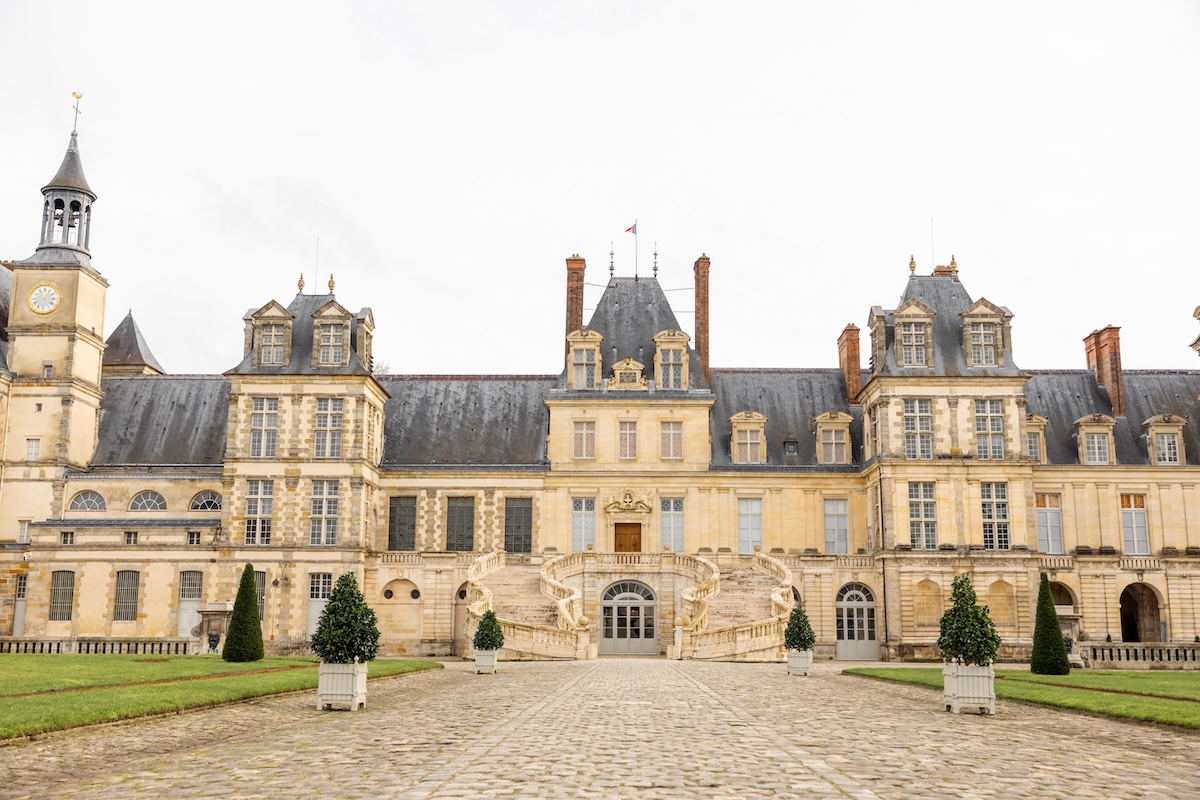If you’ve visited Paris before, chances are you’ve explored the iconic Château de Versailles. But did you know France boasts over 45,000 châteaux, each with its unique charm and history? Just a short journey from Paris lies the Château de Fontainebleau, a castle that has seen 36 kings and two emperors. It’s the perfect day-scape from Paris, steeped in history and elegance.
A Day Trip to Château de Fontainebleau

Easily accessible from Paris, Château de Fontainebleau is just a short 40-minute train ride away, making it a perfect escape from the bustling city. Parisians retreat here to enjoy its vast woodlands and outdoor activities like hiking, horseback riding, and biking.
To get there, take Line R from Gare de Lyon. Trains depart at set times throughout the day. Once you arrive at Fontainebleau-Avon station, hop on bus 3401 to “Château Fontainebleau,” which conveniently drops you off by Diana’s Garden.
I arrived early in the morning and began by exploring the château’s opulent interiors. The moment you step inside, the sheer grandeur takes your breath away. Walking through its halls, I couldn’t help but think, “If only I could meet the artists who brought this masterpiece to life.”
Every detail is exquisite: tapestries adorning the walls, intricate parquet flooring, marble statues, ornate doorways, boiseries extending from walls to ceilings, and chandeliers in every room. There’s plenty to admire!
For lunch, I dined at Les Petites Bouches de L’Empereur, near the Grand Parterre. Here I enjoyed a delightful buffet. The menu highlights fresh, seasonal, and locally sourced ingredients, with starters and desserts presented as elegant verrines, while hot dishes are prepared in Staub cocottes—all for around 20 euros.
Highlights of the Grounds
This 130-hectare estate borders the Fontainebleau Forest, a royal hunting ground. It also includes four courtyards, three gardens, and an expansive park.
The Grand Parterre was designed by the legendary landscaper André le Nôtre, this formal garden showcases his signature symmetrical style and attention to detail.
The Grand Canal lies beyond the Grand Parterre lies, stretching elegantly through the park.
The Carp Pond historically served as both an ornamental feature and a functional water reservoir. When I visited, I was graced with the presence of two swans on the pond!
Diana’s Garden and the English Garden were reated under Napoleon I. these gardens feature English landscape designs with meandering paths, lush greenery, and tranquil ponds. They offer a serene contrast to the structured beauty of the Grand Parterre.
Even in January, when the gardens aren’t blooming, I could have spent all day wandering through the gardens. There’s an air of tranquility that sets Fontainebleau apart. Unlike Versailles, this château offers a more peaceful experience, free from overwhelming tourist crowds. I actually found myself utterly alone in a beautiful ballroom.
Exploring Fontainebleau’s Royal Legacy
Château de Fontainebleau stands out not only for its grandeur but also for its impressive history. Thirty-four kings and two emperors have called it home, each leaving their mark on this castle. From Catherine de Medici to Louis XIV and Napoleon I, the château bears witness to pivotal moments in French history.
Visitors can marvel at over 40,000 works of art, including period furniture, frescoes, and paintings.
Napoleon referred to Fontainebleau as the “True home of kings” and made significant contributions to its design and restoration. Today, his throne and other personal artifacts are among the highlights of the collection.

Forced to leave Fontainebleau after the Senate voted to depose him in 1814, Napoleon gave his farewells to his troops on April 20, 1814, on the famous horseshoe staircase.
Walk through halls where monarchs once danced, admire frescoes painted centuries ago, and immerse yourself in a living museum of French royal history.


Experience Fontainebleau
Aside from the chateau, Fontainebleau offers a wealth of experiences for visitors. Recognized as a UNESCO World Heritage Site since 1981, there are many activities to participate in to enhance your visit. Explore Fontainebleau forest, known for its scenic beauty and hiking trails, the forest provides a serene retreat for nature lovers.
On the castle grounds, you can take a boat ride on the Carp Pond. I will note, this activity is not available in the winter. The boats run from April 1st to October 31st, from 10:30am to 6pm. Now I just have an excuse to go back this spring!
You can also wander a little further out. The village of Barbizon, a short distance away, is known for its 19th-century artistic heritage and charming ambiance. And if you go, make sure you say bonjour to Alice Balloy, a French jeweler, and one of the modern-day artists with an atelier in Barbizon.
A visit to Château de Fontainebleau is more than a step back in time; it’s an opportunity to explore centuries of art, culture, and royal elegance only a short distance away from the city. Whether you’re marveling at the brilliant architecture, strolling through the gardens, or reflecting on its history, Fontainebleau promises an enriching and peaceful experience.
For all ticketing information and hours, click here .
I hope you’ve enjoyed traveling with me, which French Castle should I visit next?
À bientôt,
Félicie







